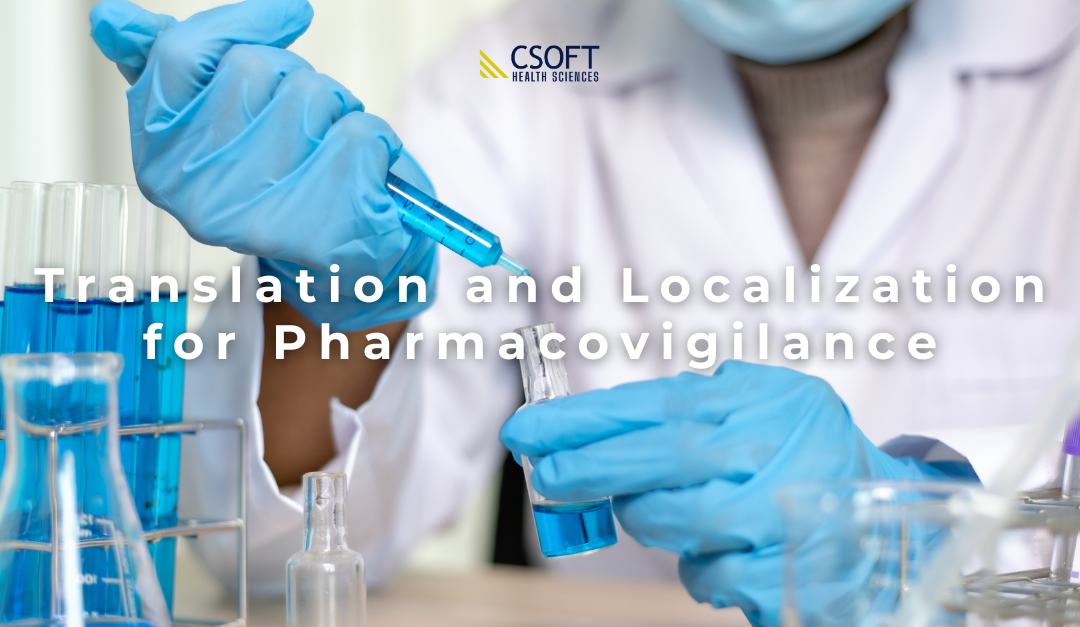Pharmacovigilance (PV) is crucial in the pharmaceutical industry, focusing on detecting, assessing, understanding, and preventing adverse effects or other drug-related health risks. The primary goal of PV is to improve patient care and safety about the use of pharmaceuticals and to support public health initiatives with accurate information on the risk-benefit profiles of medications. As the pharmaceutical sector expands globally, precise, and clear translations in PV become increasingly vital to ensure patient well-being worldwide.
The Critical Role of Localization in Pharmacovigilance
Localization in pharmacovigilance extends beyond simple translation; it entails the precise adaptation of content to meet the linguistic and regulatory frameworks of different regions. This process is essential for the success of global clinical trials, which require the distribution of coherent and accurate information across diverse linguistic marketplaces. Key pharmacovigilance documents such as Individual Case Safety Reports (ICSR), Risk Management Plans (RMP), Risk Evaluation and Mitigation Strategies (REMS), and PV Signal Documentation must be expertly translated and localized to meet strict regulatory compliance and ensure patient safety.
CSOFT Health Sciences: Blending Expertise and Technology in Pharmacovigilance
CSOFT Health Sciences combines extensive domain experience and the expertise of professional, certified translators with intelligent workflow automation to enhance the translation and localization process in pharmacovigilance. Our team comprises seasoned linguists and subject matter experts who bring an in-depth understanding of the medical and regulatory nuances required in PV. This human expertise, coupled with innovative technology, allows CSOFT to deliver high-quality, efficient, and scalable translation solutions.
The integration of generative AI supports our translators in achieving greater consistency and accuracy, particularly in managing linguistic validation and ensuring the correct usage of medical terminologies across diverse documents. This constructive collaboration between skilled human translators and innovative technologies ensures that our solutions are not only technically precise but also culturally relevant, meeting the stringent standards required for global regulatory compliance and patient safety. Additionally, this approach offers a cost-effective alternative to other pharmacovigilance translation services. Through this balanced strategy, CSOFT Health Sciences addresses the complex demands of pharmacovigilance translation, ensuring that every project delivers on quality, speed, and reliability.
Ensuring Compliance and Patient Safety Through Expert Localization
The localization of pharmacovigilance documentation is not just about linguistic accuracy but also about ensuring compliance with international regulations such as those set by the European Medicines Agency (EMA) and the U.S. Food and Drug Administration (FDA). CSOFT Health Sciences efficiently translates and adapts clinical study reports, standard operating procedures, and other regulatory documents to help pharmaceutical companies navigate through varying regulatory landscapes efficiently.
Case Study: The Impact of Negligence in Pharmacovigilance
A historical example of the consequences of inadequate PV is the case of Vioxx (rofecoxib), an anti-inflammatory drug that was linked to significant cardiovascular risks, leading to numerous patient deaths and a massive settlement due to failure to adequately report adverse drug reactions. This case underlines the critical nature of thorough and accurate pharmacovigilance practices and the role of effective translation and localization in safeguarding patient health.
- Improved Accessibility of Information: Effective translation and localization ensure that vital safety information and warnings about drug side effects are accessible to all stakeholders, including patients, healthcare providers, and regulatory bodies across different regions. If the ADR (Adverse Drug Reactions) data from the Vioxx trials had been promptly and accurately translated into the languages of all markets where the drug was available, healthcare professionals and patients could have been more aware of the potential risks.
- Enhanced Regulatory Compliance: Each country has its regulatory requirements for the approval and monitoring of pharmaceuticals. Accurate localization of PV documents helps ensure compliance with these diverse regulations. In the case of Vioxx, thorough localization could have facilitated faster and more effective regulatory actions to restrict or reconsider the drug’s approval based on emerging safety data, potentially saving lives.
- Timely and Widespread Dissemination of Critical Data: Proper localization includes not just translation but also cultural adaptation of the content to ensure it is understood within the local context. This means that essential information about drug safety is not only translated but also culturally adapted to ensure it resonates with and is clear to local populations. Faster and culturally resonant dissemination of data might have led to quicker public and professional acknowledgment of the risks associated with Vioxx.
- Trust and Transparency in Pharmaceutical Companies: Effective localization ensures that critical safety information reaches all relevant stakeholders quickly and in a format that is immediately understandable, regardless of their cultural or linguistic background. By translating and culturally adapting the data related to drug safety, such as the adverse effects of Vioxx, pharmaceutical companies can facilitate a faster response from healthcare systems worldwide. This broader and more effective dissemination helps in swiftly alerting both the public and healthcare professionals about potential risks, leading to quicker preventive measures and healthcare responses to mitigate those risks.
- Legal and Ethical Responsibility: Companies have a legal and ethical responsibility to ensure that all potentially affected parties have access to clear and accurate information about their products. Translation and localization of safety data and ADR reports are fundamental to fulfilling this responsibility, potentially reducing legal repercussions by demonstrating diligence in informing all stakeholders.
The Significance of Vigilance in Pharmacovigilance
CSOFT Health Sciences plays an essential role in ensuring the clarity and accuracy of pharmacovigilance translations. With a network of linguists and subject matter experts spanning over 250 languages, CSOFT not only meets the high standards required in pharmacovigilance but also helps pharmaceutical companies protect global public health. Effective communication within clinical trials is crucial, and with CSOFT’s advanced translation solutions, companies can ensure that every detail is meticulously handled, supporting the goal of patient safety and care.
